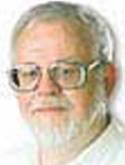When Bell was fined $1.3 million for screwing around with the same do-not-call list that it is paid to run, I thought Christmas had come early.
Putting Bell in charge of the list banning annoying telemarketers, bootleg charities and fly-by-night sales outfits from bugging you at supper time is so much like putting the fox in charge of the henhouse that just about everyone in the country knew it's ridiculous.
I put my house on the do-not-call list just days after the marvelous idea started in September, 2008. And now almost nine million Canadian phones are listed with the fox.
I recall that my first solicitation came within hours from a Sun circulation salesman. I told him off. He said they were allowed to call under the new rules which protects newspapers, pollsters, registered charities and various political tentacles. Plus something to do with companies with whom you had a contractual relationship.
 I said that even though I was someone who had earned a living primarily from newspapers, it wasn't fair to give us that exemption. He wasn't impressed. I said I had been a Day Oner with the Toronto Sun. He wasn't impressed, but then all these circulation calls now come out of Ottawa.
I said that even though I was someone who had earned a living primarily from newspapers, it wasn't fair to give us that exemption. He wasn't impressed. I said I had been a Day Oner with the Toronto Sun. He wasn't impressed, but then all these circulation calls now come out of Ottawa.I don't mind the exemption for pollsters. I really like good polls on what Canadians think. I use them when I write. But as I pointed out years ago in a column, confirmed by friends in that business, the dirty secret about polls is that almost half of the people hang up. Do we really then get a true sounding of all the people or just the views of the mouthy who will talk to anyone at any time?
I favour anything we can do to hurt the telemarketers who still sneak around the rules - thanks to Bell business advisers who run an Internet site promising to help companies get around the ban. They should know, because Bell has just been caught doing it too. I think the annoyance of Rogers calling me three days in a row, and all the renegades that call, just poisons the well of acceptance when real charities and useful pollsters call.
There was some deserved grumbling by the masses that no one seemed to get punished for calling despite your listing. Apparently there have been 29 fines, but this new one for Bell is by far the largest. The CRTC, the electronic watchdog, says it has collected only $10,000 of the $195,000 in fines levied against 28 telemarketers. Yet what is weird is the strange things these companies are allowed to do to wiggle out of confessing their wrongdoing. Bell is also giving $266,000 to Concordia University as a "goodwill gesture," while Telus agreed to donate $200,000 to Carleton so it can escape saying it was cheating. There was also a $500,000 "administrative monetary policy" against Xentel DM.
Let's have more fines because, unfortunately, I'm still bugged by illegal calls. I'm glad the CRTC is demonstrating, finally, that it can go after the big offenders too, but I 'm baffled by these gifts and bureaucratic language.
I'm not a fan of government intervention, so I know there is no way we can be protected when we call giants like Bell and get call centres in India where they deal with us in a curious stilted English. And then nothing happens.
I will not repeat my horror story that I wrote on Sept. 3, 2009 titled The Wrong Numbers of Bell. One comment came from a man who blamed outsourcing and firings for Bell's decline in service. At least, he said, we now have alternatives.
The good old days often weren't. But remember when you called a company and a human answered, and Bell didn't charge you for every last thing and still made a huge profit.
You remember, long before it turned out that Ma Bell couldn't be trusted even when it came to something it was supposed to do to protect us from being bugged just as dinner hits the table or the TV movie approaches a climax. Of course you can pay Bell so you know who's calling, just as you now have to pay Bell if any wire gives out inside your home. But you can get revenge. You can just hang up on the politicians who have allowed too many exemptions to the ban.






















